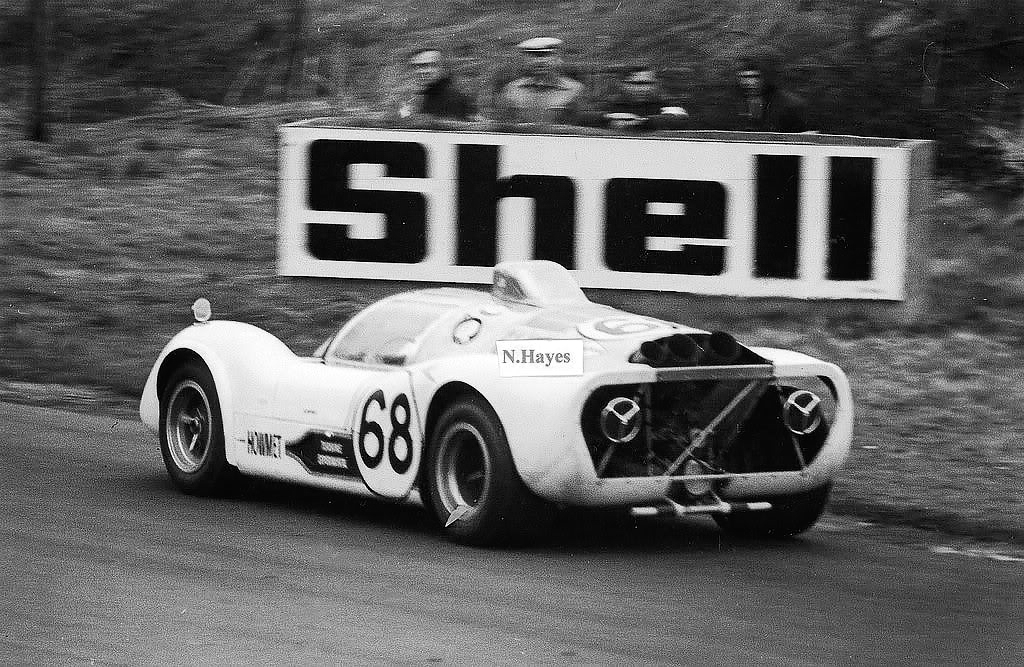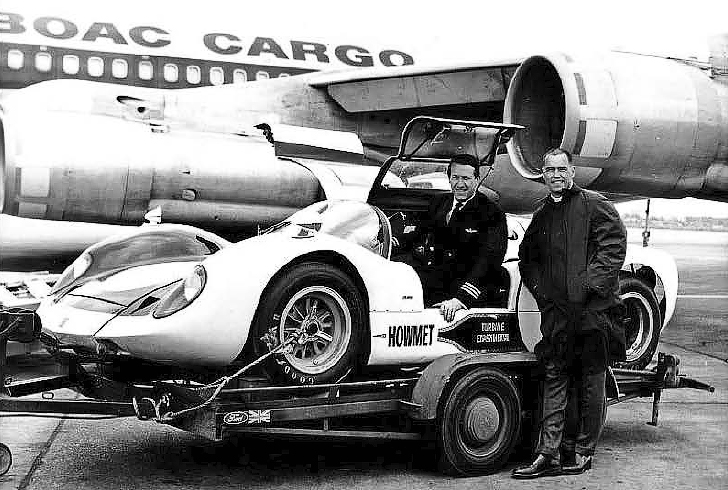
Richard Heseltine. From here to obscurity. It’s a gas, gas, gas… Richard Heseltine unearths yet another obscurity that you’ve never heard of: that gas-powered track star, the Howmet TX sports racer! Given how homogenised motor sport has become in recent years, it’s easy to forget that it was once a hotbed of innovation and lateral thinking. The Sixties in particular saw radical changes in car design and, towards the end of the decade, it appeared as though gas turbine engines might represent the future of top flight circuit racing.
Several manufacturers tried to adapt the technology for the track, but only one car made it to victory lane and that was the American Howmet Corporation’s TX sports racer. The car was conceived by Ray Happenstall, a Philadelphia resident who had form as both a driver and a designer. He reasoned that a lightweight turbine engine in a conventional sports car chassis could be competitive in the US and the FIA’s Group 6 category, and tapped his friend and amateur racer Tom Fleming to finance this brave new world.

Dibley (left) Thompson (right) & Howmet arriving in UK for 1968 BOAC 500 race at Brands Hatch.
Fleming was the vice-president of sales for Howmet, a supplier of precision castings for the US aircraft industry. A suitable powerplant was found at Continental Aviation & Engineering: a TS325-1 turboshaft engine intended for use in helicopters. This unit developed a nominal 325bhp at the output shaft and weighed just 77kg (170lb). Applying the FIA’s engine equivalency formula, it was rated at 2960cc, thus slotting neatly into the Group 6 sports-prototype three-litre category.
The turbine was mounted at the rear of a largely conventional spaceframe chassis and above a single-speed transmission which drove the rear wheels via a specially designed quick- change differential. Reverse gear was provided by a separate electric motor. A 32 gallon fuel tank was mounted centrally between the cockpit and the engine. The TX (Turbine eXperimental) made its trackside debut at the February 1968 Daytona 24 Hours, the team having by now completed a sister car which emerged slightly longer.
The original prototype was driven by Happenstall, Dr Dick Thompson and Ed Lowther. It ran as high as third during the early running, only to then connect with the wall which prompted its retirement. A month later, the team qualified third fastest, and the TX was running seventh with five hours left to go when an engine mounting broke. At the BOAC 500 at Brands
Hatch in April of that year, Thompson was joined by pilot/racer Hugh Dibley only for the car to endure an off seven laps in. A week later, Dibley drove the car in the Guards Spring Cup meeting at Oulton Park where he qualified second. He pitted for fuel in fourth place, but then the starter motor packed up so his race was run.
Heppenstall campaigned both cars in a number of Sports Car Club of America events. In June ’68, he won the qualifying race during the Heart of Dixie meeting at Huntsville, Alabama and the feature race the following day. Thompson then joined him for the following weekend’s 300 mile race at Marlboro, Maryland: the sports car veteran won the qualifier, Heppenstall led the main event from start-to- finish a day later. A disastrous Le Mans bid followed in September of the year after which the Howmet adventure ended for good. Weird and wonderful American cars from the past.





